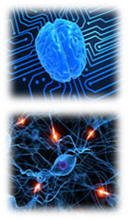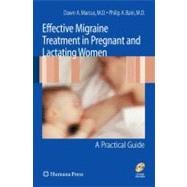Get Migraine Relief with this all natural product and Stop Your Headaches |
|
|
All Natural Pain Relief
|
|
Management Of Headache And Headache Medications |
|
|

Migraine Headache, we used to believe, was a disorder of anxious, neurotic women whose blood vessels overreacted. Migraine is not that. Migraine is a neurobiological disorder of the brain. Women's Migraine With Aura May Lead To Brain Lesions
Saturday, June 27, 2009 at 11:11:46 AM

A new study has proved that women who experience
migraines
with aura (sensory disturbances, such as with
vision, balance or speech) during midlife are
at increased risk of developing brain lesions
later.
Around one-third of individuals with migraine experience neurological aura symptoms before headache onset (migraine with aura). Now, in the latest study, Ann I. Scher, Ph.D., of Uniformed Services University, Bethesda, Md., and colleagues examined the relationship of midlife migraine symptoms and late-life infarct (tissue death)-like lesions evident on MRI. The study included 4,689 men and women in Reykjavik, Iceland (born between 1907-1935; 57 percent women) who were followed-up since 1967, examined, and interviewed about migraine symptoms in midlife (average age, 51 years; range, 33-65 years). Between 2002 and 2006, more than 26 years later, brain MRIs were performed. Participants reporting headaches once or more per month were asked about migraine symptoms and were classified as having migraine without aura, migraine with aura, or nonmigraine headache. A comprehensive cardiovascular risk assessment was performed at examinations. Infarct-like lesions were present on MRI in 39.3 percent of men and 24.6 percent of women. After adjusting for age, sex, and follow-up time, participants with midlife migraine with aura were at increased risk for total infarct-like lesions. Lesions in the cerebellum, but not in other locations of the brain, were more prevalent in women with migraine with aura compared with women without headache (23 percent vs. 15 percent); there was no difference in prevalence for men (19 percent vs. 21 percent).
The relationship between
migraine with aura and cerebellar
infarcts was only significant in women, but was not
statistically different by the age at which
headache symptoms were assessed.
Migraine without aura and nonmigraine headache were not associated with an increased risk of lesions. The clinical significance of the infarct-like lesions, such as whether the individuals with them had any symptoms, was not assessed. At the time there was no migraine treatment available. |
© CroMagna Marketing, 2009.
migraine treatment All Rights Reserved.
